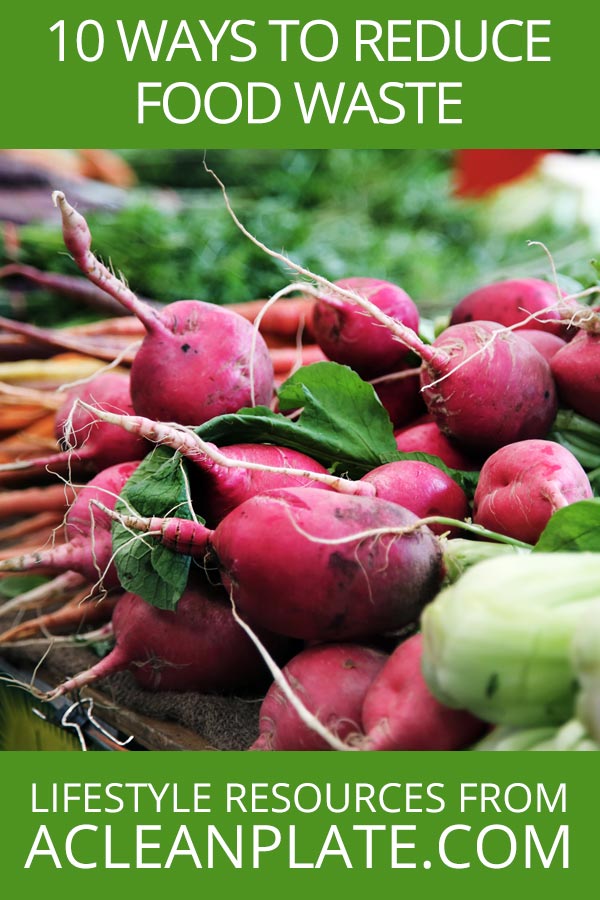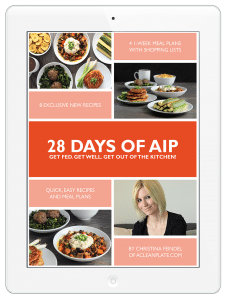10 Ways to Reduce Food Waste

On average, a household of four throws away $1,500 worth of food every year. You know how it goes: An avocado gets lost in the back of the fridge, the berries start to mold faster than you thought they would, the bananas rot at the bottom of the fruit basket…. You feel bad about not using that stuff sooner, throw it away, and hope to do better next time. But it adds up. If that $1,500 per family didn’t scare you, think about what that means on the national level: Americans throw away about 40% of our entire food supply. That’s $162 billion in resources we’re literally throwing in the trash. A little awareness goes a long way. In fact, even more than eating healthy, reducing our waste has been my #1 mission this year. Here are 10 ways to reduce food waste in your household and save that $1,500!
1. Plan your meals around what you already have.
Before you go shopping, take a look at what you already have and look up recipes you can make to get rid of it. Plan what your family will eat for the week and make a shopping list of the things you need. Prioritizing getting rid of what you have will ensure fewer things go to waste… and sticking to your list will ensure you don’t buy more than your family needs.
2. Take advantage of frozen fruit and vegetables.
Because they’re preserved close to harvest, frozen fruits and vegetables often have more nutrients than fresh ones that have been sitting in warehouses and grocery stores for days. And they’ll keep longer! If you have a habit of throwing out things like broccoli, berries, and Brussels sprouts, try switching to frozen ones.
3. Batch cook and freeze your meals.
Setting aside some time on the weekend to cook all your meals not only guarantees you’ll have healthy food all week, but gets all the ingredients cooked right away. Portion your meals out into airtight containers and keep them in the freezer until the day before you’re ready to eat them. No more throwing out leftovers!
4. Store food properly.
Taking a few extra minutes after a grocery run to properly store your food will keep it fresh far longer than just tossing it all in the fridge. Herbs and chives should be stored like cut flowers, in a jar with a little bit of water. Potatoes and onions should be stored in a cool, dry, dark pantry. Lettuce should be washed and dried, then stored in a microperforated bag in the fridge.
5. Buy ugly food.
If you’re making applesauce, it doesn’t really matter how pretty your apples are. A few cuts and bruises will be just fine. If you don’t buy the fruits and vegetables everyone else avoids, the store will just throw them in the trash.
6. Most expiration dates are just a guideline.
“Sell by” dates are completely meaningless to consumers. “Best by” and “use by” (and variations thereof) are how long the brand stands by its product’s quality. Food will spoil sooner if it’s left in warm temperatures and can last longer if it’s properly stored. So just because the “best by” date has passed doesn’t mean you need to throw that food away. Use your eyes and nose to determine if it’s still safe.
7. Got kids? Inspect their lunchboxes.
Find out what your kids are and aren’t eating in their packed lunches and ask them why a certain something went to waste. Maybe you’ve been giving them too much food or maybe they just can’t stand carrots. Work together to find the perfect balance of foods to keep their lunch out of the trash.
8. Revive your wilted greens.
Soak wilted veggies in ice water for 5-10 minutes to liven them back up. Limp carrots, broccoli, lettuce, and celery will crisp right up. And if that doesn’t work, you can still use them in a soup or stir-fry.
9. Use every scrap.
Use bones and other bits off your meat to make broth. Onion and garlic skins and peels can go in there, too, along with any pieces of carrots and celery you don’t use. Put strawberry tops in green smoothies. Bruised apples, pears, and peaches make great applesauce. Use overripe bananas in banana bread for your neighbors or coworkers. And if you can, compost the rest instead of throwing it away–a lot of cities have composting centers where you can take your food scraps.
10. Freeze what you don’t use before it goes bad.
Most meat and seafood can be safely frozen straight out of the grocery bag. Most fruits and vegetables benefit from being blanched first. Wash them, plop them in a pot of boiling water until bright, then cool in ice water and dry before freezing. Bananas can be frozen by peeling and slicing first. All of these things can be used in dishes later–it’s better than throwing them in the trash now!
Looking for more easy AIP recipes?
 I know diet change can feel overwhelming. I started the autoimmune protocol at a time when only four other people were writing about it, and over the years, I’ve striven to give you the resources I wish I’d had when I got started. Not just recipes, but ways to implement them. My first ebook 28 Days of AIP is a meal plan that will help you get going (or get back on the wagon) with as little fuss as possible. With a variety of simple, delicious recipes, plenty of leftovers so you don’t spend all your free time in the kitchen, and shopping lists ready to go, all you have to do is follow the plan, then sit down and enjoy your meal! It’s available as a digital download for $9.99.
I know diet change can feel overwhelming. I started the autoimmune protocol at a time when only four other people were writing about it, and over the years, I’ve striven to give you the resources I wish I’d had when I got started. Not just recipes, but ways to implement them. My first ebook 28 Days of AIP is a meal plan that will help you get going (or get back on the wagon) with as little fuss as possible. With a variety of simple, delicious recipes, plenty of leftovers so you don’t spend all your free time in the kitchen, and shopping lists ready to go, all you have to do is follow the plan, then sit down and enjoy your meal! It’s available as a digital download for $9.99.
